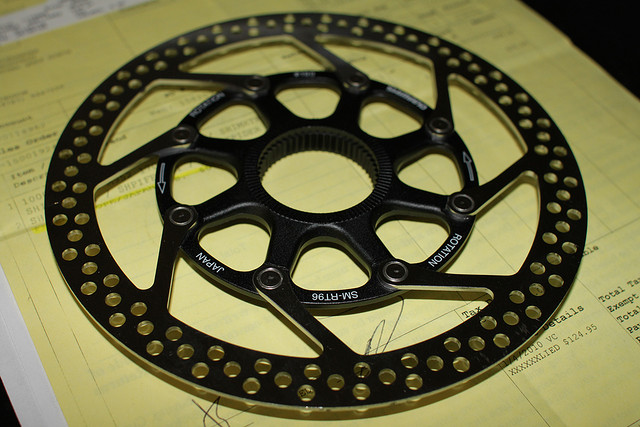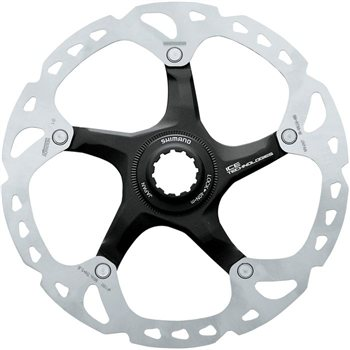There are two different issues here; firstly the rotor width, and then the rotor spider.
I have a spreadsheet of all Shimano's disc brakes (excluding the 1970s models) here:
https://docs.google.com/spreadsheets/d/19BJHVS0SvaW-xWd_gmYZuNQlYWgO0M58Um57g8HR29c
check the 'rotors' tab
Essentially the very first Shimano disc brake (post 1970s) in 1999 was made by Grimeca, and was part of the Deore XT M750 series; BR-M755. The Rotor was a six-bolt design called RT75. It was a hydraulic brake.
The next disc brake was the mechanical Deore M515, in 2000. I'm not really sure who made this, but it's a fairly generic design and uses pads that are used on Clarks and Tektro brakes. The same pads are still used on all low-end Shimano brakes today. This came out with RT50
Centerlock was first released in 2002 and was part of the XTR M960 series, hence RT96. There was now a Shimano-specific brake pad, which was narrower (in terms of how far they extend into the diameter of the rotor) than the generic ones used on the M515 etc.

cf. the generic pad used on M515 etc.

The rotor was still a fairly generic design:
RT96:

cf.
RT75

The real change came with the release of XTR M975, in 2006, and RT97. The pad design did not change, but now Shimano was ready to release rotors that only worked with their 'narrow' pads. (the narrow pad design above was changed in 2010, to add support for fins)

And since a 'narrow' pad was standard, Shimano could use less steel for their braking track, and more carbon fibre spider or whatever, saving 10g for XTR users but making everyone else's life more difficult:

Anyway, since the early days Shimano insisted on making a cheap rotor out of non-hardened steel that would wear out quickly if used with sintered pads. The introduction of their new 'high-end narrow' vs 'low-end wide' rotors, pads, and calipers meant that they could eliminate the hardened rotors for the wide calipers. Hence the last such design was SM-RT63, released in 2005. All subsequent 'wide' rotors were non-hardened.
If one compares the SM-RT54 with SM-RT64

Then the braking track is 'wide'.
It seems to me that Shimano set out to create their own ecosystem, incompatible with anyone else's. The problem with SM-RT64 is that it might work with a given third-party brake given that it does not use any plastic parts near the braking surface, but given that the braking track is narrow, it might mean that the third party brake ends up doing something like this, but reversed (i.e. instead of the incomplete contact being on the outside of the rotor, you end up with it being on the inside of the rotor):

Therefore it seems that Shimano's 'narrow' brake rotors are probably best used only with Shimano's 'narrow' brake calipers.
Other than seeking out old rotors such as RT63, it strikes me that Shimano's cheaper rotors (anything numbered below '60' essentially) work just fine, and they are quite cheap, albeit that they should wear out quickly if used with a sintered pad.
Alternatively there are a number of third party centerlock rotors , such as Jagwire, TRP, SRAM 'Centerline', etc.












